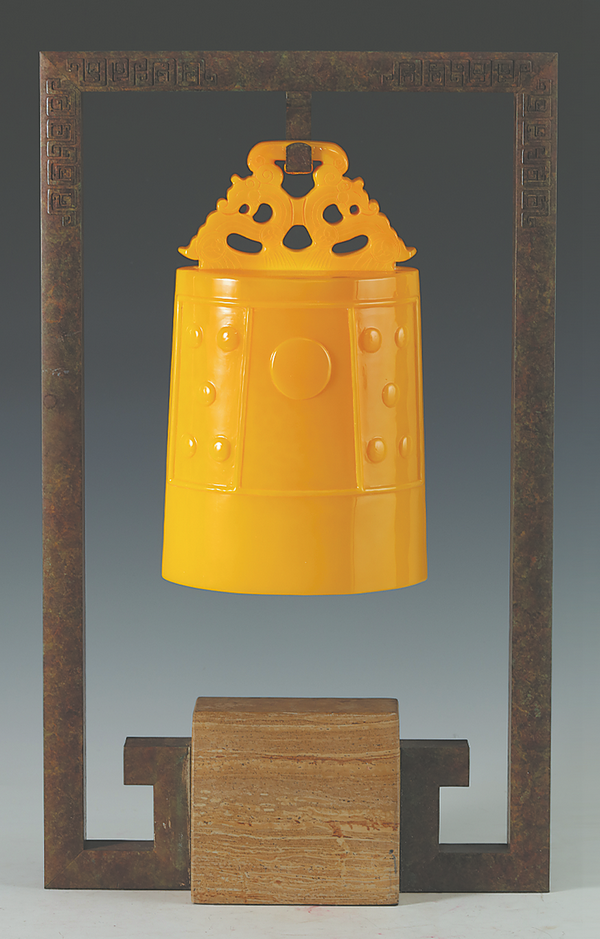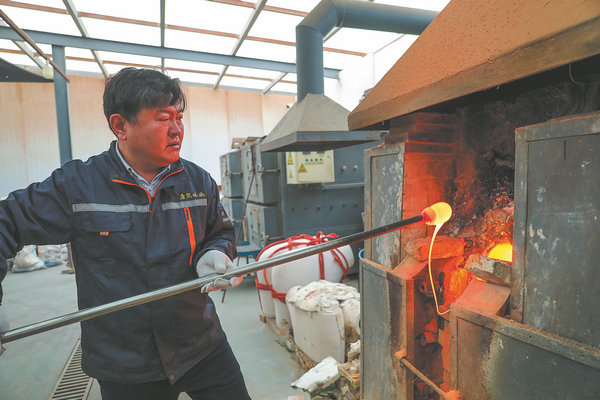

Arrays of delicate liuli (colored glass), ranging from vases and teacups to snuff bottles, glitter in the light at Sun Yunyi's studio in the Boshan district of Zibo, Shandong province.
The pieces in a distinctive oily yellow tint that resembles the fat in an elderly hen's abdomen are particularly striking. They are known as jiyouhuang (chicken-fat yellow).
These exquisite yellow liuli emerged during the Ming Dynasty (1368-1644) and were mostly produced during the Qing Dynasty (1644-1911). The color was reserved for the imperial family thus earning nicknames like "Imperial Yellow "and "Yellow Jade".
Over time, research and surviving artifacts related to its production were lost, making it an increasingly rare historical treasure, and jiyouhuang became prized by generations of collectors for its intricate craftsmanship.

Using scraps of information from his forebearers, who used to work in the royal workshop, Sun and his family managed to rediscover the way jiyouhuang was made in 2007, after much trial and error.
This achievement set him apart from other practitioners in Boshan, which has been making liuli for more than 2,000 years.
About 2 kilometers away from his studio, the deep hum of a kiln and a stark rise in room temperature at the production site give a hint of the toil behind the stunning artworks.
With a focused look and steady hand, Sun grasps a blowpipe and extends it into a crucible heated to over 1,300 C.
He stands tall, heat radiating from the furnace, his hands skillfully stirring the molten glass, before lifting the blowpipe.
As he blows forcefully into it, the fiery-red lump of colored glass on its end expands, forming into a perfect, round shape.
"Blowing is a crucial step in the process of making colored glass and determines its shape," Sun says.
"Since the colored glass must be heated repeatedly, and the blowing process needs to be done multiple times to achieve the desired shape, there's no fixed standard for the process. Every piece requires careful judgment, and liuli makers must adjust the heat and blowing technique as needed, relying on their intuition and expertise to perfect the shape," he adds.
As the glass begins to cool, its brilliant red hue shifts to a rich, deep crimson.
Using a shaping board, Sun begins gently tapping the still molten glass, molding it into a smoother, more defined form before switching to other tools, rolling and rounding it with care.
Finally, using a pair of gourd-shaped tongs, he cuts the glass from the pipe, producing a semifinished piece of jiyouhuang.
After several hours of cooling in an annealing kiln, the color takes on a yellow hue.